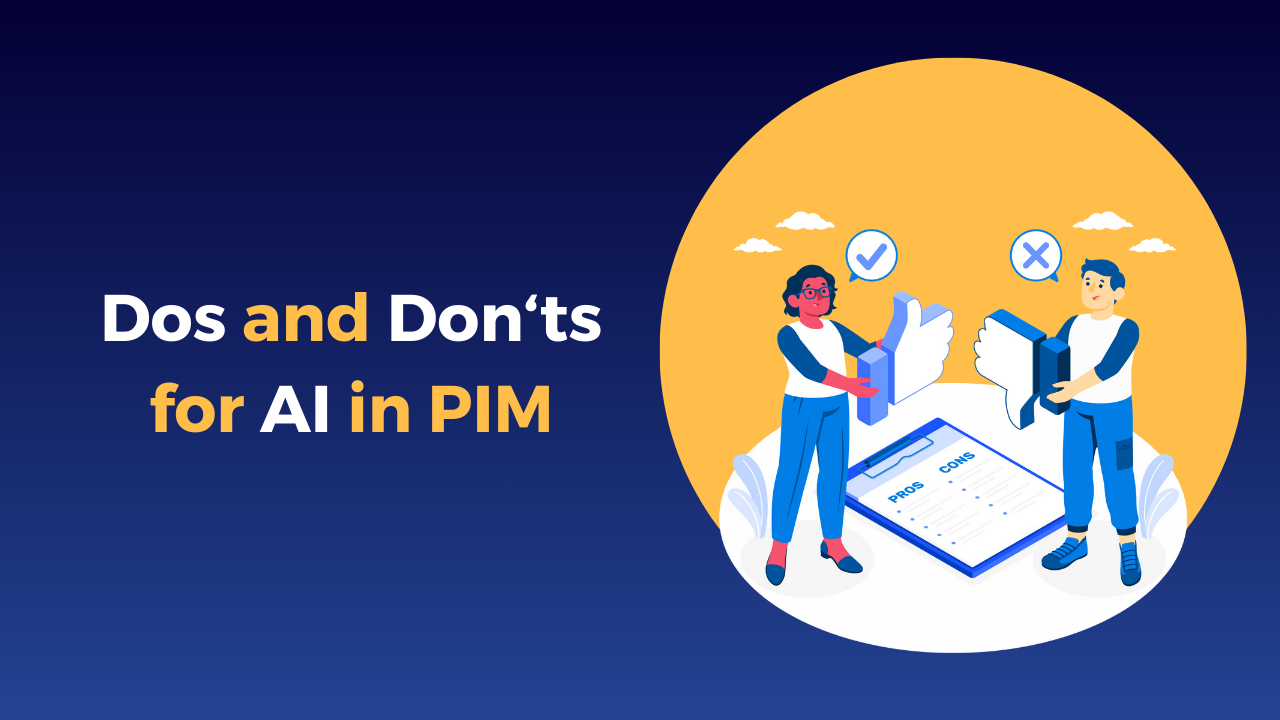During the last few years, Artificial Intelligence (AI) has emerged as a transformative force, promising to revolutionize PIM processes and outcomes. However, while the potential benefits are substantial, it is crucial for businesses to exercise caution and discernment in the implementation of AI within their PIM strategies.
Artificial Intelligence (AI), no doubt, a powerful tool that can greatly enhance PIM processes, should be treated carefully to ensure optimal results. At Iceshop, as a strong player in the PIM market, we carefully consider the appropriate and inappropriate applications of AI in shaping our future product strategy. Let’s explore the do’s and don’ts for utilizing AI in PIM together.
The Safe Do’s:
1. Data Quality Enhancement:
Do: Leverage AI to enhance data quality. Utilize machine learning algorithms to cleanse, standardize, and enrich product data. This ensures accuracy and consistency across your PIM system. PIM software such as Icepim has already begun implementing AI into its content creation and enhancement functionalities.
2. Automation for Repetitive Tasks:
Do: Automate repetitive and time-consuming tasks. AI can handle mundane processes like data entry, categorization, and tagging, freeing up human resources for more strategic activities. Some systems can use AI for these functionalities, but they can also be accomplished with well-known automation tools in the e-commerce automation industry.
3. Personalized Customer Experiences:
Do: Utilize AI to create personalized customer experiences. Implement recommendation engines that analyze customer behavior to suggest relevant products, improving user engagement and increasing sales.
4. Predictive Analytics:
Do: Embrace predictive analytics to forecast trends and demand. AI algorithms can analyze historical data, identify patterns, and help optimize inventory management and marketing strategies.
The “Be Careful” Don’ts:
1. Overlooking Data Privacy:
Don’t: Overlook data privacy and security. Ensure compliance with data protection regulations and implement robust security measures. Mishandling customer data can result in severe consequences and damage brand reputation. Collaborating with external AI tools requires strict compliance in terms of data security
2. Ignoring Human Oversight:
Don’t: Rely solely on AI without human oversight. While AI can automate many tasks, human expertise is essential for decision-making, especially in complex scenarios or when dealing with sensitive issues.
3. Underestimating Training Needs:
Don’t: Underestimate the importance of continuous training. AI models require regular updates and adjustments to remain effective. Invest in training the team to understand and work with AI tools effectively.
4. Neglecting Scalability:
Don’t: Neglect scalability considerations. As your business grows, your PIM system must be able to handle increased data volumes and user loads. Ensure the AI-powered PIM solution is scalable to accommodate future growth.
5. Overcomplicating the User Interface:
Don’t: Overcomplicate the user interface. A user-friendly interface is crucial for the adoption and success of any PIM system. Avoid overwhelming users with unnecessary features and ensure that AI-driven functionalities are intuitive.
Conclusion:
AI in PIM holds tremendous potential for transforming how businesses manage and leverage product information. By following the do’s and avoiding the don’ts, organizations can harness the transformative power of AI in PIM while mitigating potential risks, ensuring a balanced and strategic approach to digital product management. As technology continues to evolve, the smart integration of AI in PIM will remain a key driver for success in the digital era. At Iceshop, we are already working on implementing AI in Icepim to provide users with a dynamic experience in product information management that meets today’s business needs and challenges.



